
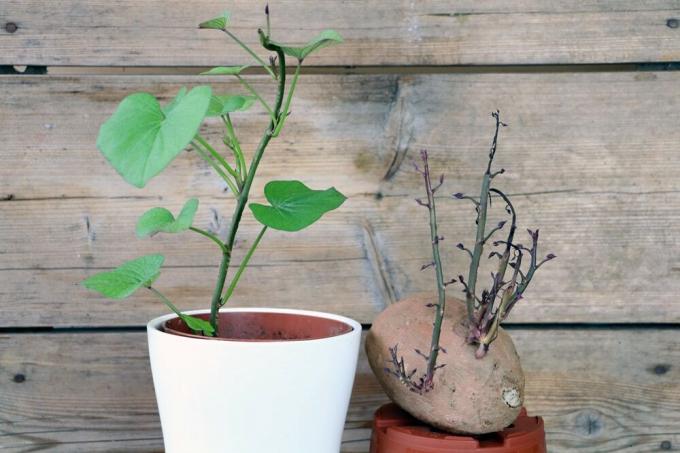
Table of contents
- gain cuttings
- germination of the cuttings
- Germination in the water vase
- Germination in the seed tray
- Overwintering the cuttings
- Overwinter in a pot or tub
- Conclusion
Batata does not tolerate cold at all, because temperatures of just 10 degrees pose a danger to the frost-sensitive plant. Overwintering the entire plant, including the leaves, is usually associated with a lot of effort and often promises little chance of success. It is better to overwinter the sweet potato with the help of its cuttings. This method also has the advantage that new offshoots can be obtained from the matured seedlings. In this article you will find out how to get the cuttings through the winter safely!
gain cuttings
The cuttings are best obtained in late summer, while it is still relatively warm and the plant has not yet withered. In principle, however, the offshoots can be obtained until the first frost occurs. For this purpose, a vigorously grown, healthy mother plant is first selected. It should never show any diseases or a lack of nutrients, because cuttings from such a plant are not suitable for overwintering or for propagation. Once you have chosen the right mother plant, proceed as follows:
- Choose a shoot that is about 10 to 20 cm long
- cut below the leaf axis (nodium).
- this is a thickened stem area
- from this form the leaves
- be sure to use a sharp, sterile cutting tool when cutting
- garden shears, for example, are suitable for this
- high-percentage alcohol is suitable for sterilizing
- then rinse and clean the cuttings with water
Tip:
Instead of rinsing the cuttings, you can soak them in water for about 10 minutes. If needed, a small squirt of soap can be added to the water to kill any pests.
germination of the cuttings
After the shoots have been cleaned and freed from possible pests, they are ready for germination. There are two different methods for this, because they can germinate in a water vase as well as in a commercially available seed tray. For both variants, however, the lowermost leaves of the cuttings should be removed first. Depending on the method selected, the subsequent procedure is as follows:
Germination in the water vase
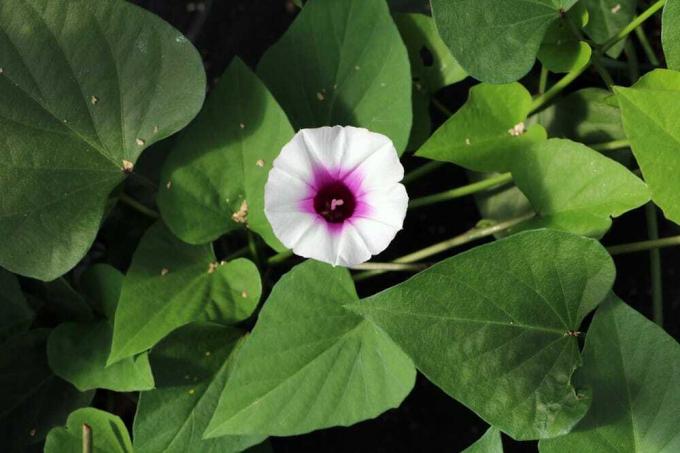
No special equipment is required for this method, as fresh water and a container are sufficient. Ideally, the container is transparent, because this allows the root development to be observed. For example, a vase or an ordinary glass is suitable for this. If you want to germinate the cuttings in water, it is best to proceed as follows:
- Place shoots in a container of fresh water
- ideally the water is slightly warm
- make sure that no leaves come into contact with the water
- if necessary, remove more leaves from below
- change the water every few days
- the old water is suitable for watering other plants
- Place container in a place out of direct sunlight
- the warmer it is, the faster the cuttings will root
- after a few days the first roots form
Tip:
Often the leaves of the cuttings droop or even fall off. However, this is not a cause for concern, it is completely normal!
Germination in the seed tray
For this variant, a bowl or a pot as well as a commercially available growing soil are required. The amount of work is less with this method, since the cuttings do not require any special care after insertion. The cuttings germinate best in the seed tray if you proceed as follows:
- Fill the pot or bowl with potting soil
- Use cleaned cuttings
- pay attention to high humidity
- Temperatures of at least 20 degrees
- optimal temperature is 25 degrees
- a mini greenhouse on the windowsill offers the best conditions
Overwintering the cuttings
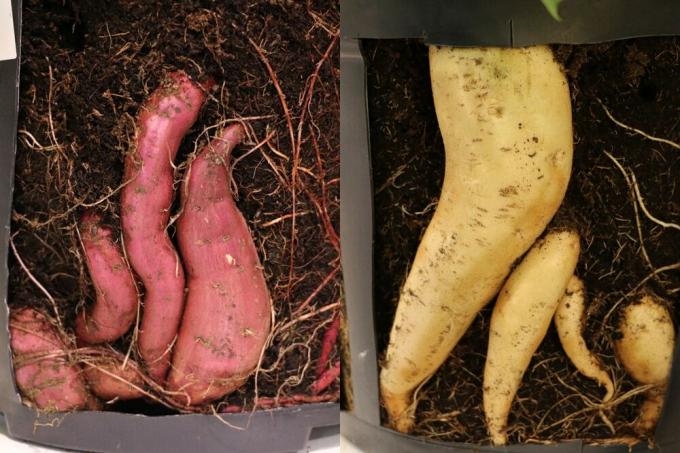
There are two different options for overwintering the cuttings. On the one hand, they can remain in the water vase all winter or they can be placed in their own pot. The following must be observed here:
Hibernation in the water vase
- check the water regularly
- to make sure it doesn't get too slimy
- or even evaporated
- because the water level should always be above the roots
- the roots must never dry out
- also change the water every few days
Overwinter in a pot or tub
- Fill containers with loose substrate
- ordinary potting soil is suitable for this
- Place the cuttings in their own pot
- as soon as the first roots have formed
- then place in a bright, warm location
- a windowsill is ideal
- The substrate must not dry out, but should always be evenly moist
- therefore water regularly
Tip:
After about two months, the plants are usually strong enough to pull new cuttings from them.
Conclusion
Overwintering the entire sweet potato plant is usually not very promising, whereas overwintering the cuttings is successful in many cases. Essential here is the optimal location and regular watering of the cuttings. The amount of work is relatively small, but the chances of successful overwintering of the offshoots are all the greater.
 garden editorial
garden editorial I write about everything that interests me in my garden.
Learn more about potatoes
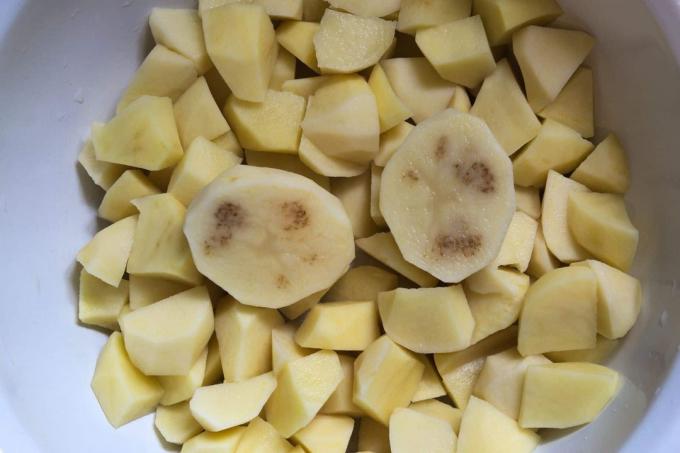
Potato is brown inside: is it edible?
After peeling or cooking, a potato has brown to black spots on the inside. This doesn't look very appetizing at first. And above all, the question arises as to whether the potato is still suitable for consumption or not. Since the causes of this discoloration can vary, in some cases it is due to […]

Black spots on potatoes: still use them?
Potatoes can have black spots. The potatoes are almost always edible despite the black spots. However, affected potatoes may show changes in taste and texture.
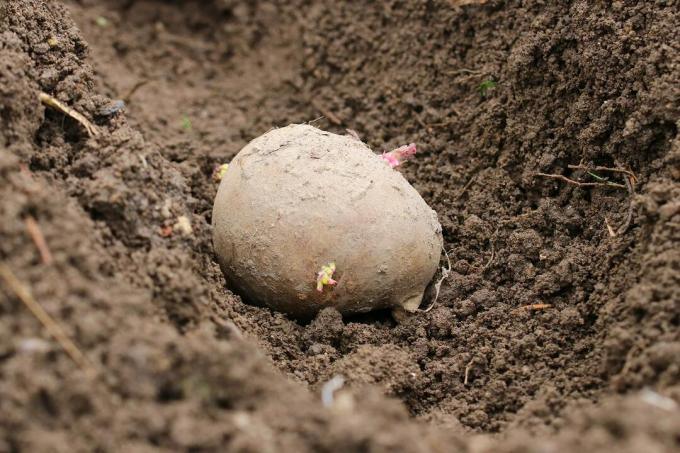
Time: from and until when do you plant potatoes?
Potatoes are among the most widely grown vegetables. So that self-cultivation works and a lush harvest can be brought in over many months, self-cultivators should pay attention to one important point: the right time to plant.

Planting potatoes: distance and depth
The potato (Solanum tuberosum) is a staple food with a wide range of preparation options. The tubers are indispensable in many dishes and are tastiest when you pick them yourself. What could be more obvious than growing them yourself. You can do this without your own garden.
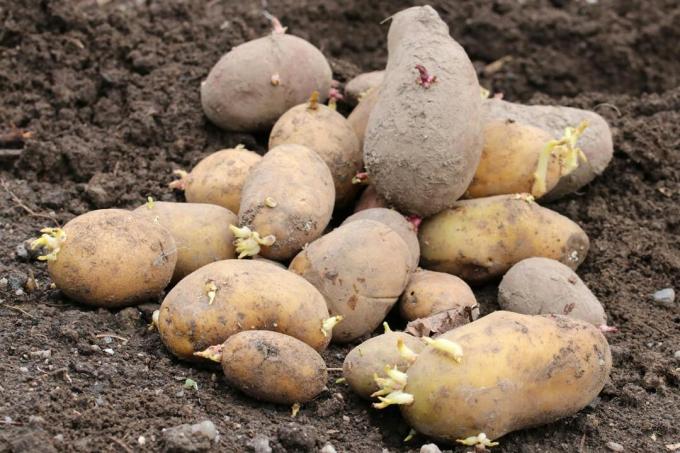
Mixed culture: 14 good neighbors of potatoes
German cuisine would be unthinkable without potatoes. Have you ever thought about growing the delicious tubers in your own garden? Use the advantages of a mixed culture! We present 14 plants that are suitable for mixed cultivation with potatoes.

Laying potatoes: ideal spacing and depth
Potatoes are good for the vegetable garden because they prepare the soil optimally for subsequent vegetables. They can also be stored for a long time and can be prepared in a variety of ways. You can read here which spacing is the right one for laying potatoes.

